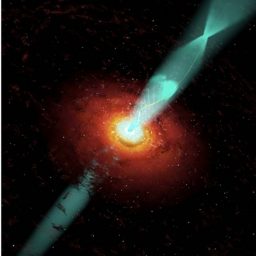Coffee talks
Monday 06/07/2020 @ 14:30, On-line
Hannah Stacey (Max Planck Institute for Astrophysics), "The rocky road to quiescence: witnessing the compaction and quenching of quasar hosts at z~2"
A key aspect of the study of galaxy evolution is understanding how massive elliptical galaxies formed and grew concurrently with their supermassive black holes. High-redshift quasar host galaxies are thought to represent a stage in the formation of massive galaxies whereby the black hole is rapidly accreting and the galaxy is transitioning from a dusty starburst into compact spheroid. We observed eight gravitationally lensed quasar hosts with the Atacama Large (sub-)Millimetre Array (ALMA) and resolve dust and molecular gas on sub-kpc scales in combination with our pixellated lens modelling technique. We find that some quasar host galaxies can be characterised by sizes similar to coeval dusty star-forming galaxies, while some are more compact with sizes similar to coeval passive galaxies. The compact systems are rapidly exhausting their gas reservoirs within 20 Myr, suggesting we observe them in a late stage in their compaction before they are quenched by star formation and/or quasar feedback. For one radio-loud quasar system we resolve warm, dense molecular gas which is ~100 pc in diameter around the quasar, suggesting that investigation of lensed quasars with ALMA could help understand the efficient AGN feeding and feedback during the peak of cosmic black hole and galaxy growth.

